| It may be in the middle
of nowhere but Monument Valley boasts an airport with a tarmac runway
(albeit short). This 10 seater flew in in the morning from who knows where
(probably Las Vegas). | 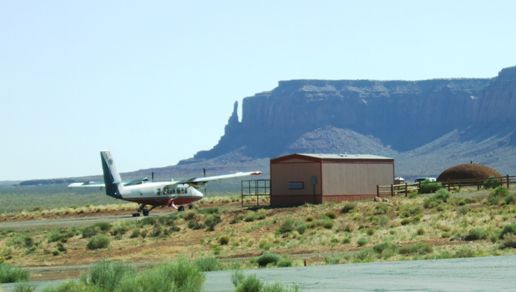 |
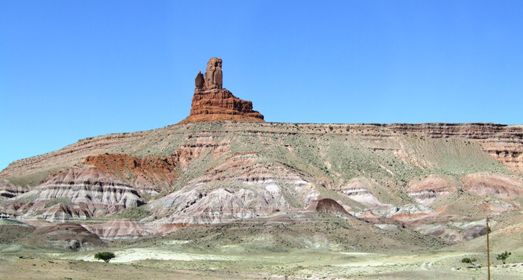 |
We continued southwards past this last sentinel formation to Chinle, another
shapeless town in the 293,000 sq mile Navajo reservation otherwise known as Navajoland. It is mostly in Arizona but spreads over the border to New
Mexico. The capital is at Window Rock (also the home of Joe Leaphorn!) |
| The rock formations are
interesting and are known as the Chinle formation. It actually reaches up
all the way to Capitol Reef in Utah. The characteristic is the multicoloured
formations with pinks and blues in profusion. | 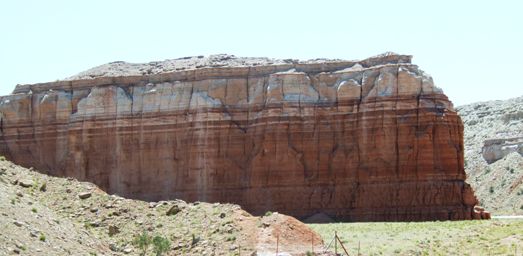 |
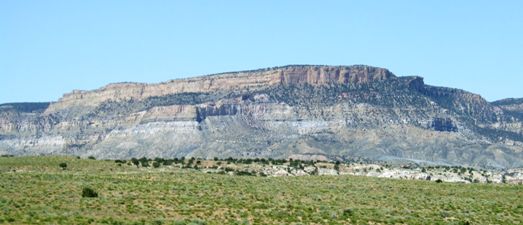 |
In ancient times it was a sea and the sandstones and clays were the
sediments on the sea floor. Then the whole area was raised up as the earth's
plates moved and now that sea is at 6000ft. |
| It doesn't stop it being
flat and endless and pretty much barren desert. It is however colourful.
This is the view looking west. | 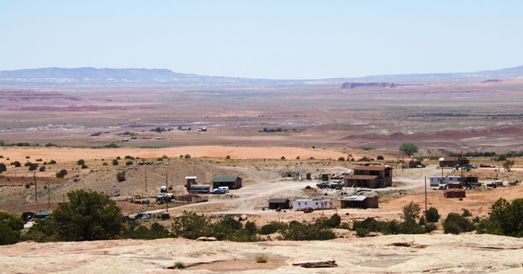 |
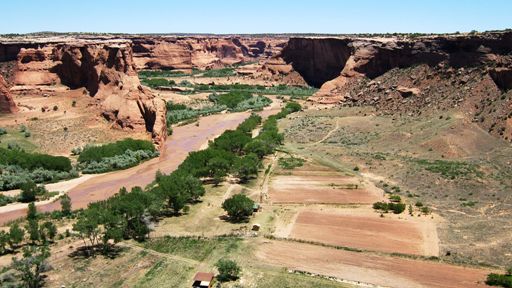 |
To the east we have the Canyon de Chelly (pronounced Shay). This deep rift
is a sacred place to the Navajo and you are only allowed in the bottom of
the canyon with a native guide. It looks as though a river flows along the
bottom, and at certain times of the year it does. But most of the time it is
more or less dry. This is still the desert. |
| You can drive along the
south and the north rims (each about a 30 mile round trip). We drove the south
rim and stopped at the ten or so overlooks to gaze down into the valley
below. | 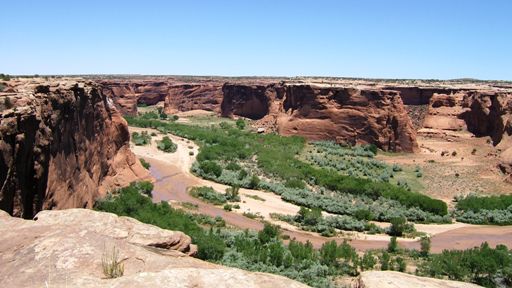 |
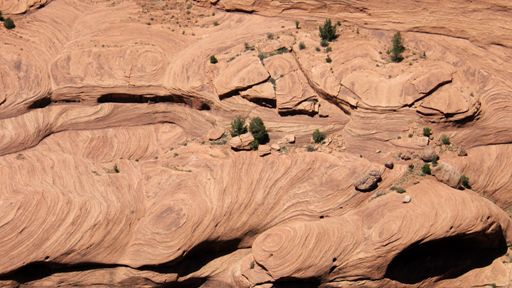 |
The rock formations are very interesting if you are into geology (which we
are not). But the flowing curves and ripples in this sandstone look very
pretty. |
| For most of the canyon
the cliffs are fairly sheer going down about 1500ft. Not as deep as the
Grand Canyon but in some ways more manageable. | 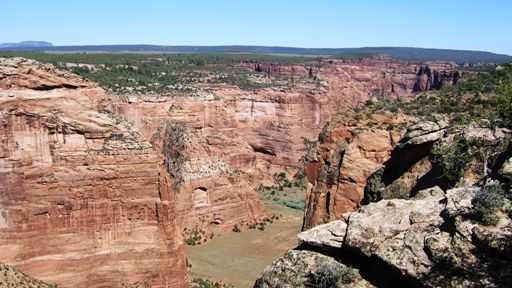 |
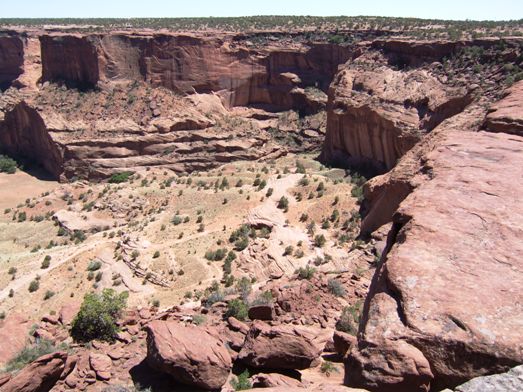 |
There are few trees and those that do exist are fairly stunted or along the
river bed. Some non native plants were introduced in the 1930s to try to
stabilise the erosion, but they caused more problems and are now being
removed with some difficulty. |
| There is a two mile
round trip hike down to the White House from the canyon rim. This is a
serious hike and took us almost two hours. The track down has two tunnels,
this is the bottom one and frames this lone tree at a Navajo ceremonial site
just off to the right. | 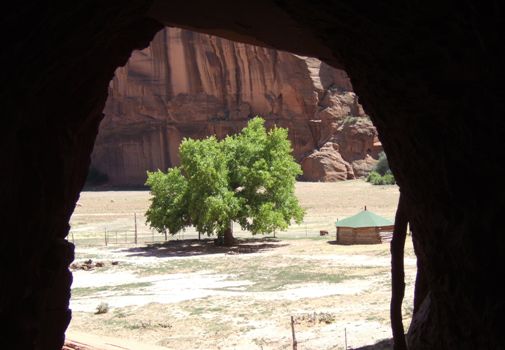 |
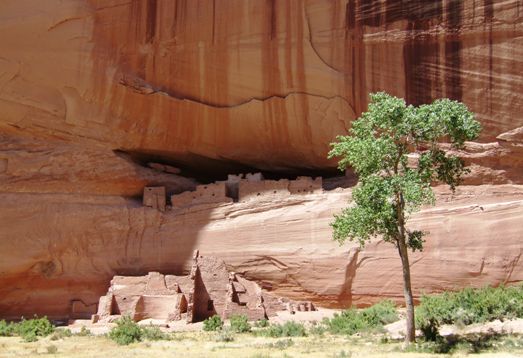 |
The White House is an Ancestral Puebloan period cliff dwelling although it was not made
by the same people as at Mesa Verde. The archaelogists can tell by the style
and date of the brickwork. It was however abandoned about the same time
reinforcing the view that the cause was extended drought. |
| The lower tunnel on the
way back up. It is only short and you welcome the shade. We didn't take
any water which was a mistake. We were quite tired by the time
we got back to the top. We did meet a Navajo National Park ranger at the
bottom who was (as ever) very knowledgeable and informative. He also
confirmed my observation that many Navajo have very English/Scottish names
although there are also some families which have Navajo names (their
equivalent of Smith and Jones as he put it). But he was unable to give us any
reason for this. | 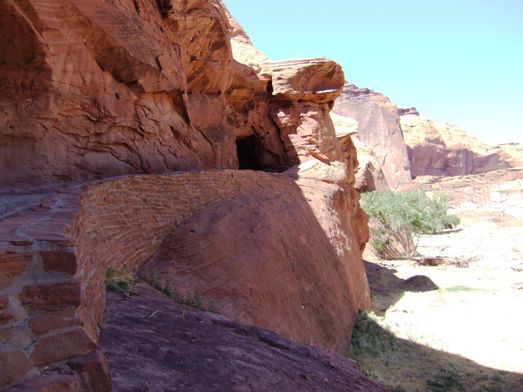 |
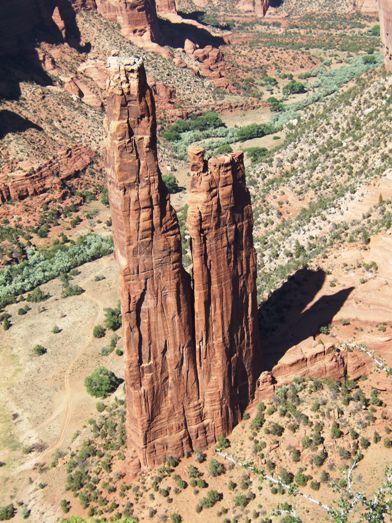 |
This is the rock towards the end of the canyon known as Spider Rock. The roads
continue onwards but are no longer paved. Fort Defiance is further on which
is another special place to the Navajo since it featured in their 'Long
Walk' when they were displaced from their lands by the white man. |
| Another shot of the same
peak which is similar to those in monument valley only some 90 miles to the
north. This bit must be just that bit harder than the surrounding (long
gone) rock. | 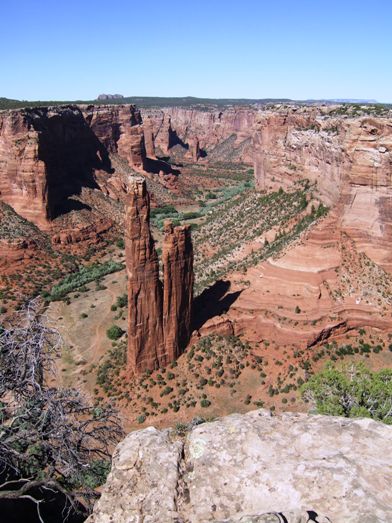 |
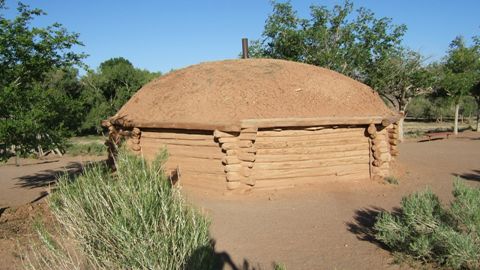 |
Back at the visitor centre is this traditional Navajo hogan. A few families
still live in huts like these or more modern stone equivalents. However most
inhabitants seemed to live in quite modern looking estates with simple
designs, steel roofs and double garages! The communities here also seem well
provided with schools and health centres. All in all the Navajo seem to have
their act together more than some of the tribes we have seen. |
|